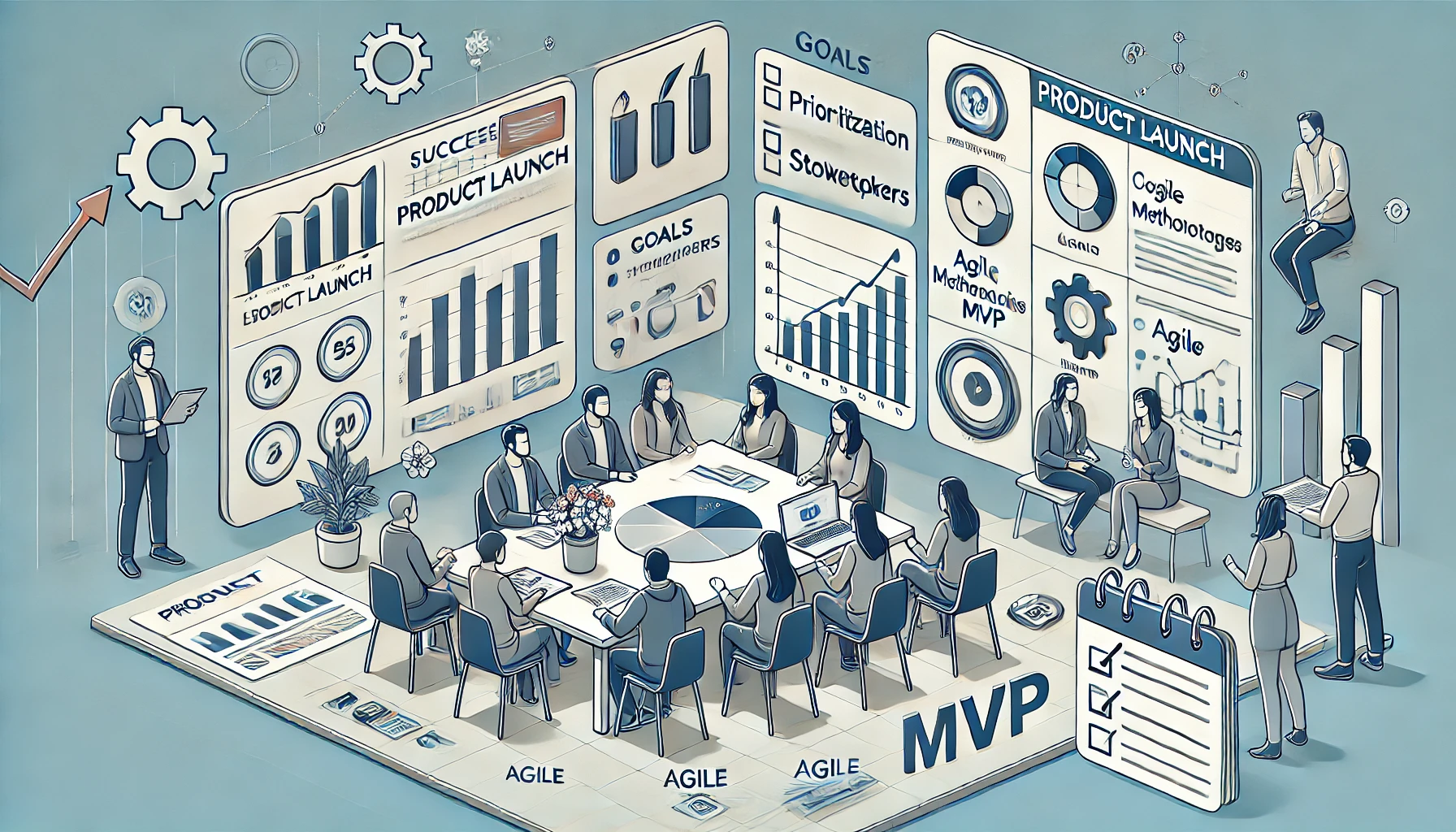Launching a new product is an exhilarating yet challenging endeavor, often fraught with unexpected hurdles. One of the most common and potentially derailing challenges is scope creep—the gradual expansion of a project’s scope through the addition of new features or requirements without corresponding adjustments in time, budget, and resources. This phenomenon can jeopardize a product launch by causing delays, increasing costs, and diluting the focus on core functionalities. However, by employing a structured approach to feature prioritization, you can effectively manage scope creep and ensure a successful product launch. Here’s how:
1. Define Clear Objectives and Goals
The foundation of any successful project lies in clearly defined objectives and goals. These guide decision-making and help maintain focus on what is essential.
Objectives are specific, measurable actions or steps that need to be accomplished to reach a goal. They are usually short-term and focus on the immediate outputs of the project.
Goals are broader and more long-term compared to objectives. They define the desired outcome or the end result of the project.
Example: Suppose you’re launching a new e-commerce platform. Your primary goal might be to provide a seamless shopping experience with essential functionalities like user registration, product catalog, shopping cart, and checkout process. Documenting these objectives ensures all stakeholders understand and agree on them, keeping the team focused on what is truly important.
2. Establish a Prioritization Framework
A prioritization framework helps systematically evaluate and rank features based on their importance, feasibility, and impact. This structured approach ensures that the most critical features are developed first, keeping the project on track.
- MoSCoW Method: Categorize features as Must have, Should have, Could have, and Won’t have.
- Kano Model: Classify features based on customer satisfaction and functionality.
- Value vs. Effort Matrix: Plot features on a matrix to evaluate their value against the effort required to implement them.
Example: For the e-commerce platform, you might categorize features as follows:
- Must have: User registration, product catalog, shopping cart, checkout process.
- Should have: Product reviews, wish lists.
- Could have: Social media integration, advanced search filters.
- Won’t have: Augmented reality previews (for the initial launch).
3. Engage Stakeholders
Stakeholders include anyone who has an interest in the project, such as customers, business leaders, and team members. Engaging stakeholders ensures their needs and expectations are considered in the prioritization process.
- Methods of Engagement: Conduct workshops, surveys, or interviews to understand the needs and expectations of stakeholders.
Example: In the e-commerce project, feedback from potential users might reveal that a mobile-responsive design is crucial, pushing it into the “Must have” category.
4. Analyze Data and Feedback
Using data-driven insights helps in making informed decisions about feature prioritization. This involves analyzing market research, user feedback, and data from existing products or services.
Example: Analytics from an existing e-commerce site might show that a majority of users abandon their carts due to a complicated checkout process. This insight would prioritize streamlining the checkout process in the new platform.
5. Implement a Change Control Process
A change control process ensures that any new feature requests or changes are carefully evaluated before being included in the project. This helps manage scope creep by preventing unnecessary or low-priority features from being added impulsively.
- Change Request Form: A standardized form for stakeholders to request changes or new features.
- Change Control Board (CCB): A group responsible for reviewing and approving change requests based on criteria like impact, feasibility, and alignment with project goals.
Example: A stakeholder requests adding a loyalty program to the e-commerce platform. The CCB evaluates its impact on the timeline, budget, and core objectives before making a decision.
6. Use Agile Methodologies
Agile methodologies promote flexibility and iterative development, allowing teams to adapt to changes without losing focus on the project goals.
- Scrum: A framework where work is divided into sprints (typically 2-4 weeks). At the end of each sprint, a potentially shippable product increment is delivered.
- Kanban: A method where work items are visualized on a board, and the team focuses on continuous delivery by limiting work in progress.
Example: Using Scrum, the e-commerce platform development team delivers incremental value in each sprint, allowing for regular review and adjustment of priorities based on stakeholder feedback and project progress.
7. Focus on the Minimum Viable Product (MVP)
An MVP is a version of the product with just enough features to satisfy early adopters and provide feedback for future development. This approach helps in launching quickly and avoiding feature bloat.
- Identify Core Features: Determine the essential features that solve the primary problem and deliver value to users.
- Launch and Gather Feedback: Release the MVP to a select group of users and collect feedback to guide future development.
Example: For the e-commerce platform, the MVP might include basic user registration, a simple product catalog, and a functional checkout process, allowing the team to launch quickly and gather feedback on these core functionalities.
8. Regularly Review and Adjust Priorities
Continuous review and adjustment of priorities ensure that the project remains aligned with its goals and can adapt to any changes in the environment or stakeholder needs.
- Regular Review Meetings: Schedule periodic meetings with the project team and stakeholders to discuss progress, review priorities, and make adjustments as needed.
- Feedback Loops: Establish mechanisms for collecting and incorporating feedback from users and stakeholders throughout the project lifecycle.
Example: After the initial launch of the e-commerce platform, user feedback indicates that adding a product review feature would significantly enhance user engagement. This feature is then prioritized for the next development phase.
Real-World Example: Dropbox’s Early Days
Dropbox initially focused on creating a simple, reliable file synchronization service. Despite numerous feature requests, the team prioritized the core functionality that addressed the primary user need: seamless file synchronization across devices. By focusing on this MVP, they were able to launch quickly, gather user feedback, and iteratively add features based on actual user needs rather than speculative requests. This disciplined approach allowed Dropbox to grow steadily and maintain a strong user base.
Effectively managing scope creep and prioritizing features requires a clear understanding of project goals, stakeholder engagement, data-driven decision-making, and flexible project management practices. By implementing these strategies and continuously reviewing priorities, you can ensure a successful product launch.
Tools and Techniques
- Project Management Software: Tools like Jira, Trello, or Asana can help in tracking tasks, managing backlogs, and facilitating communication.
- Prototyping Tools: Tools like Figma or Sketch allow for quick prototyping and gathering early feedback.
- User Feedback Platforms: Platforms like UserTesting or SurveyMonkey can provide valuable user insights.
By implementing these strategies, you can effectively manage scope creep, ensuring that your product launch remains on track and delivers maximum value to users.




